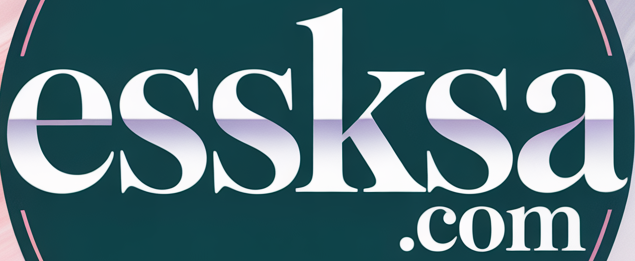Discover what health insurance covers and how to select the perfect plan for your needs. Secure your health and financial peace of mind in 2025.
Health Insurance: Your Guide to Choosing the Best Plan in 2025
Navigating health insurance can feel like decoding a complex puzzle, with terms like premiums, deductibles, and copays creating confusion. But here’s the reality: health insurance is more than just paperwork—it’s your safety net. It protects you from crippling medical bills and ensures access to essential care. This guide simplifies the process, empowering you to choose the right health insurance plan with confidence.

What is Health Insurance?
Health insurance is an agreement where you pay a monthly premium to an insurer, and in return, they help cover costs for medical services, including:
- Doctor visits
- Hospital stays
- Prescription medications
- Preventive care (e.g., vaccinations, screenings)
It’s your shield against high healthcare costs and a key to accessing timely medical care.
Why Health Insurance Matters
Imagine an unexpected surgery or emergency room visit costing tens of thousands of dollars. Without insurance, that could derail your finances. Health insurance provides:
- Affordable medical care
- Access to preventive services
- Protection from overwhelming medical debt
- Peace of mind for you and your loved ones
In the U.S., where healthcare costs are among the highest globally, insurance is essential to avoid paying full price for care.
Types of Health Insurance Plans
Health insurance plans vary, each with unique benefits.
Here are the main types:
- Health Maintenance Organization (HMO)
- Requires using in-network doctors and hospitals.
- Needs a primary care physician (PCP) for specialist referrals.
- Offers lower premiums and out-of-pocket costs.
- Preferred Provider Organization (PPO)
- Allows flexibility to see any doctor, with lower costs for in-network providers.
- No referrals needed for specialists.
- Higher premiums but greater choice.
- Exclusive Provider Organization (EPO)
- Similar to PPO but covers only in-network care (except emergencies).
- More affordable than PPO plans.
- High Deductible Health Plan (HDHP)
- Features lower premiums but higher deductibles.
- Pairs well with a Health Savings Account (HSA) for tax advantages.
Key Health Insurance Terms to Know
Understanding these terms will help you compare plans effectively:
- Premium: Your monthly payment to keep the plan active.
- Deductible: The amount you pay out-of-pocket before insurance kicks in.
- Copayment (Copay): A fixed fee for specific services (e.g., $25 for a doctor visit).
- Coinsurance: The percentage of costs you pay after meeting your deductible.
How to Choose the Right Health Insurance Plan
Selecting the best plan doesn’t have to be daunting.
Follow these steps:
- Evaluate Your Needs: Consider your health status, frequency of doctor visits, medications, or chronic conditions.
- Verify the Network: Ensure your preferred doctors and hospitals are in-network to save on costs.
- Compare Total Costs: Look beyond premiums to deductibles, copays, and out-of-pocket maximums.
- Balance Your Budget: Weigh monthly premiums against potential emergency expenses.
- Explore HSAs: If you’re healthy and want tax savings, consider an HDHP with an HSA.

How Much Does Health Insurance Cost in 2025?
Costs depend on factors like:
- Age and geographic location
- Plan type and coverage level
- Employer-sponsored vs. private plans
In the U.S., average monthly premiums for 2025 are estimated at:
- Single coverage: $350–$650
- Family coverage: $1,200–$2,000
Subsidies through the Affordable Care Act (ACA) can lower costs significantly for eligible individuals. Employer contributions may also reduce your expenses.
What Does Health Insurance Cover?
Most plans include:
- Doctor and specialist visits
- Emergency services
- Hospitalization
- Maternity and newborn care
- Prescription medications
- Mental health and substance abuse treatment
- Preventive care (e.g., annual checkups, screenings)
Always review plan details to confirm coverage specifics.
Common Mistakes to Avoid When Choosing a Plan
Steer clear of these pitfalls:
- Focusing only on low premiums without checking deductibles or copays.
- Overlooking whether your doctors are in-network.
- Ignoring prescription drug coverage specifics.
- Neglecting preventive care benefits.
- Missing open enrollment deadlines (typically November–January for ACA plans).
Top Health Insurance Providers for 2025
Consider these reputable U.S. providers:
- Blue Cross Blue Shield: Extensive network, excellent customer service.
- Kaiser Permanente: Integrated care model, ideal for coordinated healthcare.
- UnitedHealthcare: Nationwide coverage, flexible plan options.
- Cigna: Competitive pricing, strong digital tools.
- Aetna: Affordable plans with robust preventive care benefits.
Compare quotes and read customer reviews to find the best fit.
Final Thoughts: Health Insurance is Your Safety Net
Health insurance is an investment in your well-being and financial security. By assessing your needs, comparing plans, and understanding coverage details, you can select a plan that aligns with your lifestyle and budget. Beyond emergencies, insurance supports preventive care, helping you stay healthy for the long term.
Take Action Today
Ready to find the perfect plan? Here’s how to start:
- Use an online health insurance calculator to estimate your needs.
- Request quotes from top providers.
- Review plan benefits and customer feedback before enrolling.
Invest in your health now for a worry-free 2025.


